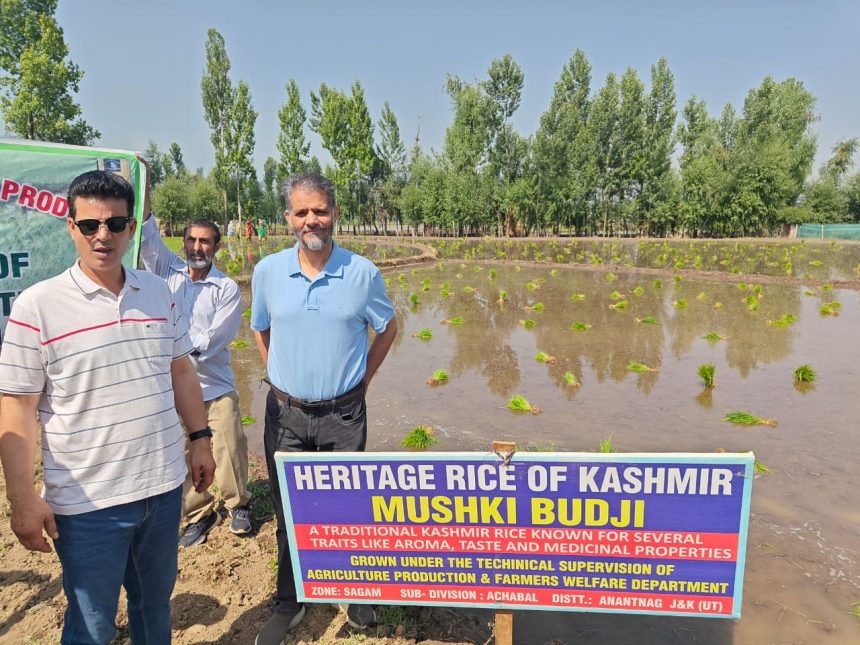The aromatic rice variety Mushk Budji has seen a significant rise in cultivation in Sagam area of Anantnag district following the intervention of the Holistic Agriculture Development Programme (HADP). The area under cultivation has now expanded to over 451 hectares, up from just 245 hectares before the implementation of the scheme.
Zaffar Ahmad, a farmer from Sagam, told Rising Kashmir that he has been cultivating Mushk Budji on 12 kanals of land for years.
“Mushk Budji gives better returns in the market. With support from the agriculture department in terms of seeds, fertilisers, and machinery, the crop is witnessing a boost,” he said.
“Last year, we sold it at Rs 25,000 per quintal. Around 2.25 quintals are produced per kanal. With 720 farmers now registered with the Farmer Producer Organisation (FPO), we collectively earned around Rs 74 lakh from Mushk Budji. The local market remains the prime source for sales currently,” he said.
Ahmad said they are also exploring national and international markets to further improve returns for farmers. “The GI tag has been a major boost. With it, the price of Mushk Budji has increased by Rs 5,000 per quintal,” he added.
Chief Agriculture Officer (CAO) Anantnag, Shahnawaz Ahmad, said the area under Mushk Budji cultivation was 245 hectares before HADP.
“In 2024-25, the area expanded by 136 hectares, and for the current year 2025-26, a further 70 hectares are planned for expansion,” he said. He said a seed village spread over 95 kanals has been established at Sagam, where seeds are procured from local farmers and distributed free of cost to those willing to switch to Mushk Budji.
CAO said the land belongs to local farmers, but the department, through HADP, promotes the cultivation of niche crops and encourages area expansion.
“In the seed village, the department procured seeds at Rs 12,000 per quintal. In the first year, 87 quintals were procured, followed by 100 quintals last year, which were then used for further expansion,” he said.
“New farmers are also provided with bio-fertilisers, fungicides, and pesticides free of cost if there is any disease incidence,” he added.
Last year, production exceeded 4,000 quintals. “Earlier, the average yield was 2.25 quintals per kanal, but last year it rose to 3 quintals per kanal due to favourable climatic conditions,” he said.
He said marketing is handled by the FPO, which sells the produce in national and international markets. The department facilitates their participation in exhibitions and training programmes.
“Mushk Budji cannot be processed in regular paddy machines. It requires special shellers as broken seeds reduce the price,” he said.
The seed processing unit will be set up under a cost-sharing model—50 percent assistance from the department and the rest by the FPO.
Zubair Ahmad, Agriculture Extension Officer (AEO), Sagam said,“Mushk Budji is a landrace, not a variety. Cultivated for generations, it was previously known as ‘Kaamaad’. Unlike normal paddy, Mushk Budji is aromatic, has harder grass, a hairy thread-like extension, and a bulky seed—its distinctive characteristics,” he said.








